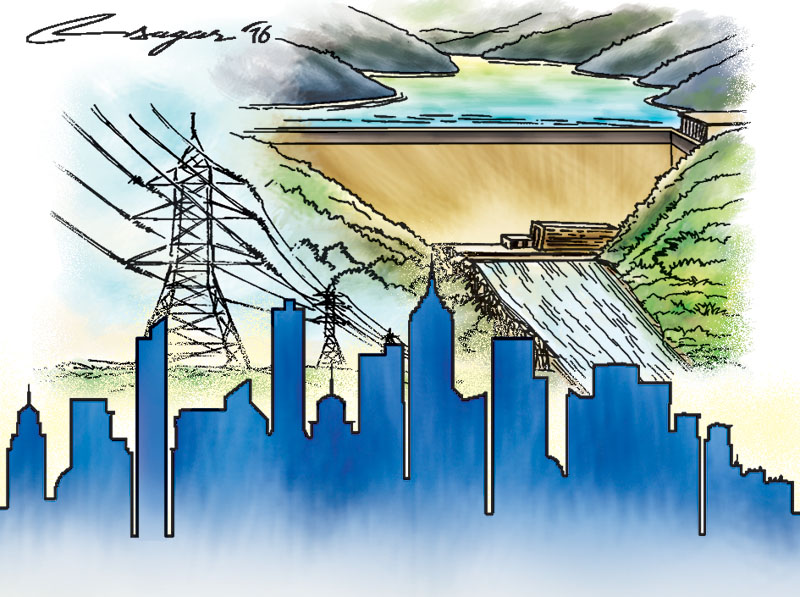Energy efficiency: Relieving the funding burden
The ESCO is not only responsible for the construction but also for the operation and maintenance of the facility at a predetermined and guaranteed price
Supplying energy for sustainable economic development is an objective shared by developed and developing countries alike, although the urgency is particularly great in the developing world, where large populations do not have access to modern energy services such as electricity and instead rely on traditional and often unsustainable energy sources such as fuel wood.
Demand for global energy services to support economic growth has been growing significantly and so does the fuel share of CO2 emissions. The increased CO2 emissions from 15,637 MtCo2 in 1973 to 31,734 MtCO2 in 2012 (IEA 2014) tells the story of anthropogenic induced emissions in the world atmosphere. Recent events of Beijing red alert in last December and massive pollution level in Delhi call for a drastic change in our energy practices mainly dominated by fossil fuels.
There are two options available to meet the increased demand for energy; one way is to supply more and more energy to meet the ever increasing energy demand and other way is to reduce the energy demand by improving energy end-use and supply efficiencies so that saved energy can meet increased part of energy demand.
The first one is conventional energy management and second one is energy efficiency. Clearly, both approaches are needed. However, of the two, only energy efficiency can generate nearly immediate results with existing technology and proven policies and do so while generating strong financial returns that exceed those from investments in conventional energy supply. Simply increasing conventional energy supply is not a viable option because continued reliance on the predominant energy source, fossil fuel, exacerbates energy insecurity and raises serious environmental concerns, especially related to climate change.
The world at this moment needs rapid transformation in its global energy system and fortunately energy transformation presents a historic opportunity for developed and developing countries alike. Realizing the fact that the costs of inaction are far greater than the costs of action, the world needs to grab every possible chance and the best opportunity is to use energy more efficiently.
Energy efficiency represents the cheapest and surest means of curbing carbon emissions and saving money for other productive uses. Promoting this low-cost, high-impact “energy source”, the world-wide energy demand can be significantly reduced and this in turn will avoid additional exploitation of emission prone fossil fuel sources.
The idea of energy efficiency is not new. By the end of 19th century, all developed countries became dependent on energy for their industrial activities. As coal, oil and gas were abundantly available at a low price, availability and the costs of these energy sources were not an issue in the beginning. But with oil crisis in 1970s and consequent rise in fuel cost initiated an interest in energy conservation. At the same time, the rapport of the Club of Rome in 1972 raised questions about the limits of growth and the effect of economic growth on the climate. The 70’s were therefore a starting point for worldwide experimenting with energy efficiency.
Since then various approaches have been tried in the field of energy services focusing on the efficiency measures. For the people who know business, energy efficiency never is an attractive business option to invest. Investment in other sector yields much more profit compared to the monetary return from energy efficiency projects.
Thus funding has always been an issue while undertaking energy efficiency projects. Low and subsidized energy price (e.g. fuel and electricity tariff) in many countries are other hindrances while judging savings on EE investments. Low total energy cost as percentage of total operating cost is also a factor that demotivates energy saving in production business.
Hence the need for a new concept was felt where investment does not come as a burden to EE implementation and fund is made available within the box. Energy Contracting (and ESCO) is such a concept that relieves the funding burden as it provides financing opportunities to the energy efficiency projects through the energy savings. Energy contracting (EC) concept shifts the focus away from the sale of the units of final energy (like fuel or electricity) towards the desired benefits and services derived from the use of the energy. The EC model aims at providing useful energy or energy savings at minimal project cycle cost to the end user and it achieves environmental benefits due to the associated energy and emission savings.
Energy contracting (EC) models provide an instrument to optimize life-cycle performance, including the operational phase of the energy system.
The ESCO is not only responsible for the construction but also for the operation and maintenance of the facility at a predetermined and guaranteed price. Thus the ESCO has an inherent interest in taking good care of quality assurance at the construction site, optimizing the operation and performing proper maintenance.
Nepal does not have energy contracting and ESCO practices so far like those in mature energy markets of the world, but it is not late to start it by now. However, it will be beneficial to Nepal to focus on energy efficiency in supply side rather than in the demand side, and the reason is obvious.
The writer is an energy expert






